Kabocha Korokke (Japanese Pumpkin Croquette) is a cozy, nostalgic dish that captures the heart of Japanese comfort food.
Traditionally, korokke is made with mashed potatoes mixed with sautéed onions, coated in panko breadcrumbs, and deep-fried until golden and crispy. This version swaps out the potatoes for sweet, nutty kabocha squash, giving the filling a creamy, velvety texture and natural sweetness that pairs beautifully with the crispy panko coating.
The result is a croquette that’s simultaneously light, rich, and deeply satisfying.
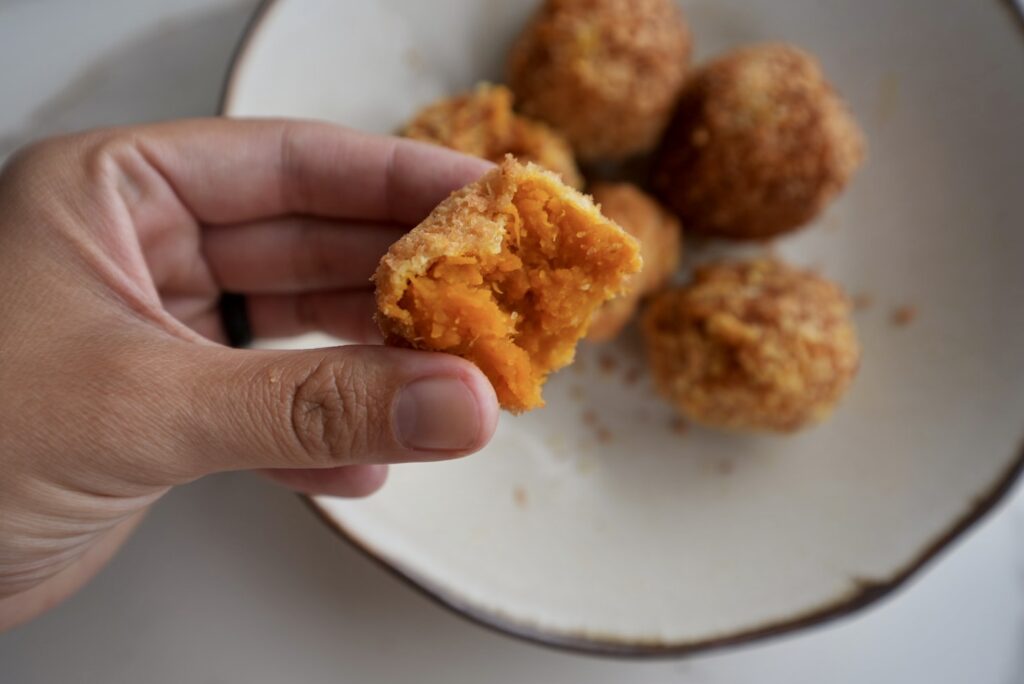
Adding bacon takes this classic dish to another level. The salty, smoky flavor of the bacon perfectly balances the sweetness of the kabocha, adding a savory depth that makes each bite irresistible. When cooked together, the rendered bacon fat also enhances the filling, infusing it with extra flavor without overpowering the delicate taste of the squash.
You can serve the korokke as-is, or drizzle them with tonkatsu sauce or Japanese mayo for a little extra indulgence.
Kabocha Korokke with bacon is perfect as an appetizer, side dish, or even a snack. It’s a great way to use up leftover kabocha from another recipe, and they can be made ahead of time. Just shape and bread them, then store in the fridge or freezer until ready to fry or air fry.
Whether you’re already a fan of korokke or trying it for the first time, this twist on a Japanese classic brings together the best of sweet and savory in one perfectly crispy bite.

If you are unable to find kabocha near you (although it is very common at most Asian markets, as well as many grocery stores during the fall/winter months), or are hesitant to try it, you can also check out my Korokke recipe that uses potatoes as the filling instead.
More on kabocha below!
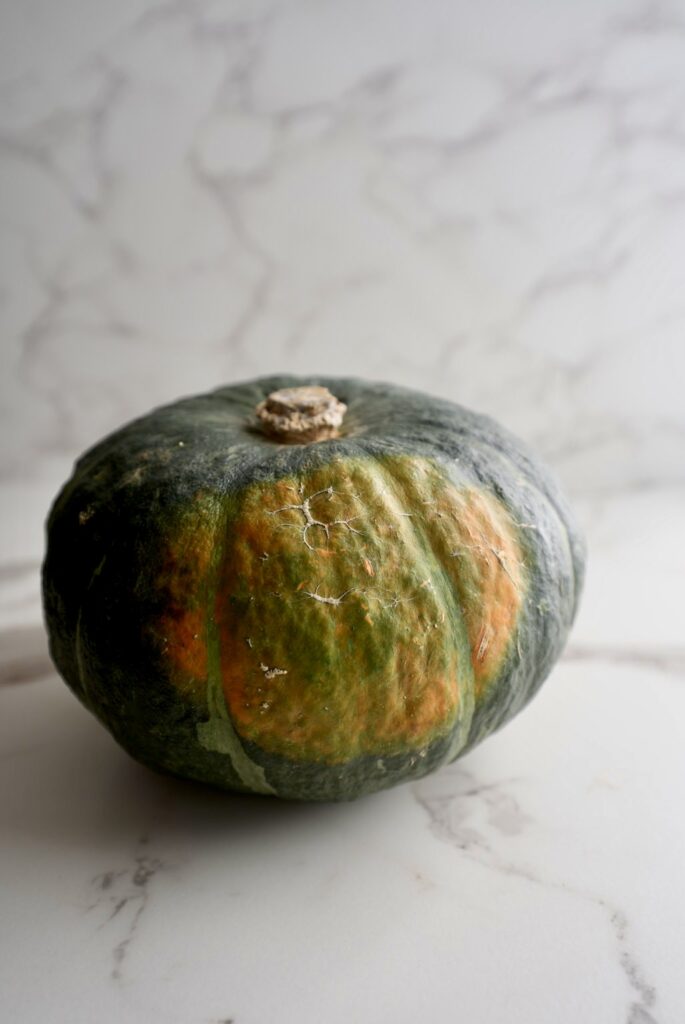

What is Kabocha?
Kabocha is a green-skinned squash with a bright orange flesh that is sweet and slightly nutty. It’s often compared to butternut squash but is a bit drier and denser in texture. Kabocha is used in various Japanese dishes, and is fairly popular in Japan.
If you are wanting to get a little adventurous in your cooking, there are many other ways to prepare kabocha that you can try out:
- Kabocha Bread or Muffins: Pureed kabocha is incorporated into bread or muffin batters, adding moisture and sweetness.
- Roasted Kabocha: Slice kabocha into wedges, season with salt, pepper, and a drizzle of olive oil, then roast until tender and caramelized.
- Kabocha Tempura: If you’ve ordered tempura from a restaurant before, odds are you’ve probably had this: thin slices of kabocha coated in a light tempura batter and deep-fried.
- Kabocha Nimono (Simmered Kabocha): Kabocha is simmered in a mixture of dashi, soy sauce, and mirin until tender.
- Kabocha Soup: Kabocha is pureed into a creamy soup, often with onions, garlic, and broth, and sometimes with a touch of cream.
- Kabocha Pie: Similar to pumpkin pie, kabocha is pureed and mixed with sugar, spices, and eggs, then baked in a pie crust.
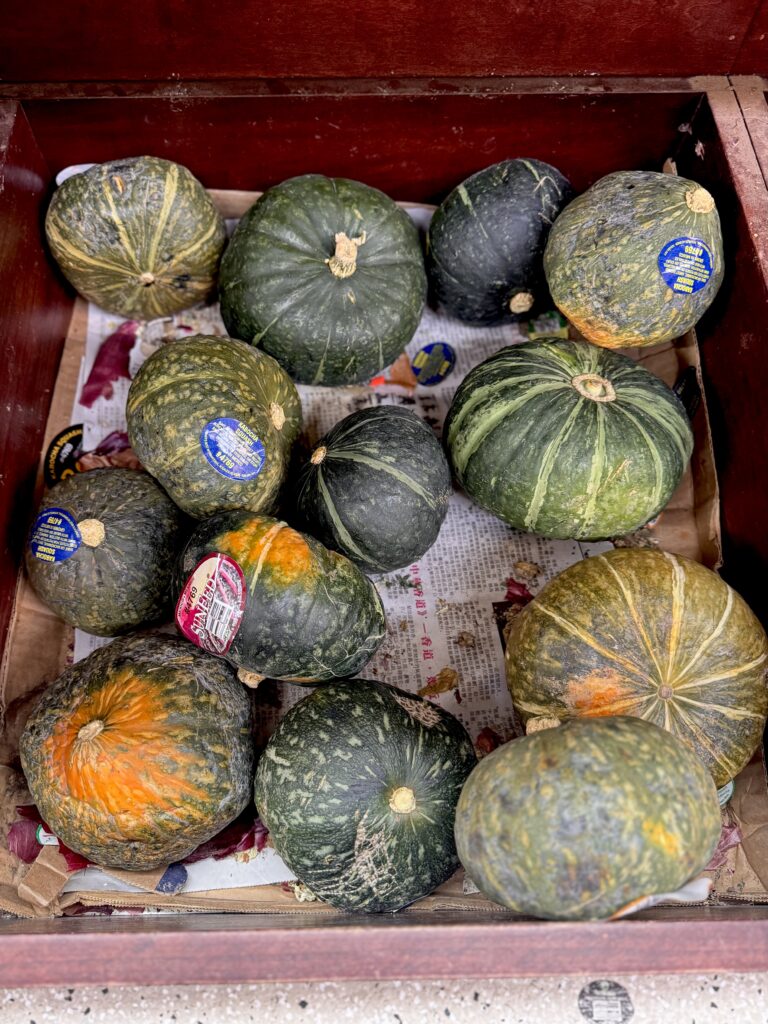
What is Panko?
The ingredients used for Korokke can vary depending on what fillings you want to put in. However, one thing all Korokke have in common is their panko (パン粉). Panko is a type of light, flaky Japanese breadcrumb made from crustless white bread, commonly used for a crispy coating in fried foods.
It’s widely used in Japanese cuisine, especially for fried dishes like korokke, tonkatsu (breaded pork cutlet), and ebi fry (breaded shrimp).
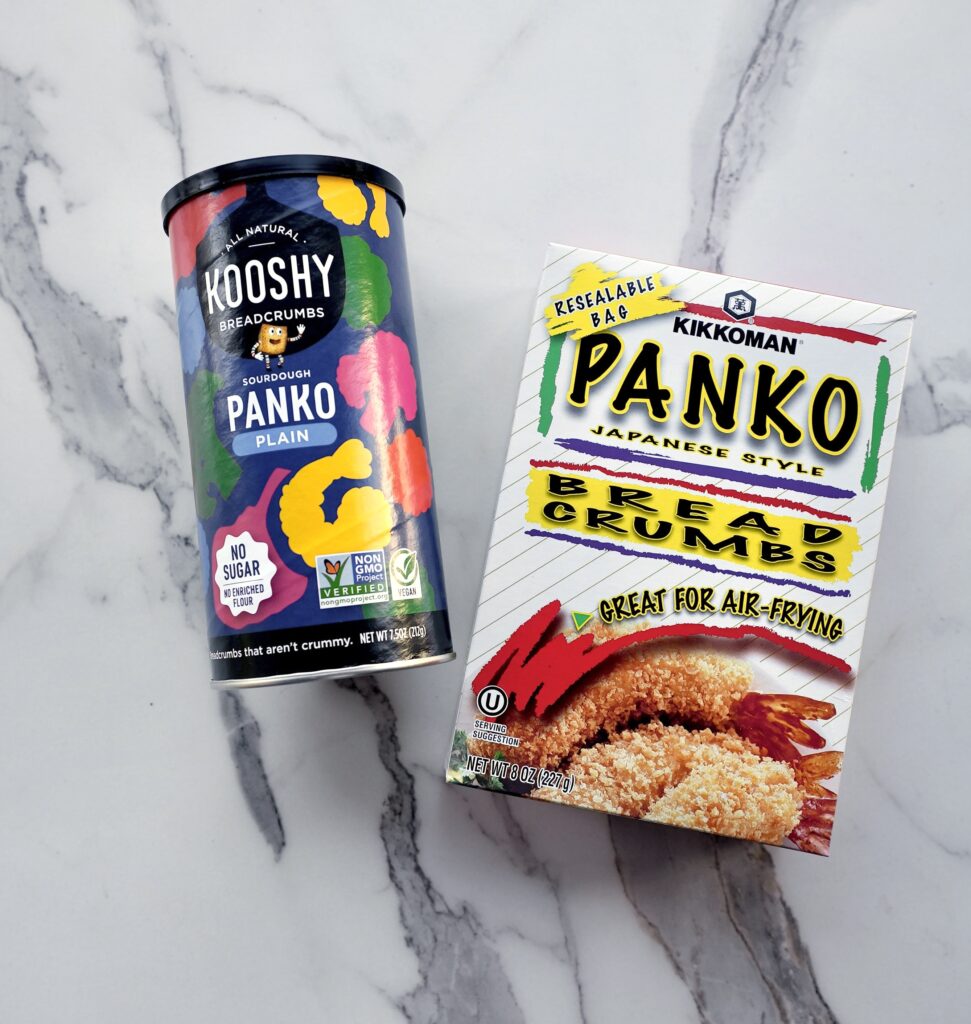

Kabocha Korokke
- Total Time: 1 hour
Description
Kabocha korokke with pieces of bacon is a crispy, golden croquette filled with creamy, sweet kabocha and savory, smoky bacon, creating a delightful balance of flavors and textures.
Ingredients
*Before cutting into the kabocha, I typically microwave it for 3-5 minutes to soften it a little, since the outer layer can be pretty tough.
- 300 grams kabocha, diced (skin off) – about 1/4 of a large kabocha
- 1 tsp salt
- 1/2 tsp black pepper
- 6 strips bacon, cut into small pieces
- 3 eggs, beaten
- 1/3 cup flour, for coating (use more or less as needed)
- 1 1/2 cups panko, for coating (use more or less as needed)
- Vegetable oil, for frying
Tonkatsu Sauce (for dipping – visit here for store-bought sauce):
- 2 tablespoon soy sauce
- 3 tablespoons Worcestershire sauce
- 1/2 cup ketchup
- 1 teaspoon brown sugar
Instructions
- Place the diced kabocha in a large steamer and bring the water for it to a boil. Steam until the kabocha are tender, about 18-20 minutes. You can also do even shorter if you like your korokke to be more chunky instead of creamy.
- Cut off the green skins of the kabocha and place into a bowl.
- Mash the kabocha with a fork until smooth. Season with salt and pepper.
- In a medium-sized pan, cook your pieces of bacon until they are golden brown. Add the bacon to the bowl with the kabocha and mix to spread throughout the kabocha mixture.
- Take a portion (~2 tablespoons) of the mixture and shape it into round balls, about 1 1/2 inches wide.
- Prepare three shallow dishes: one with flour, one with the beaten egg, and one with panko.
- Dredge each korokke patty in flour, then dip it in the beaten egg, and finally coat it in panko.
- Heat at least 2 inches of vegetable oil in a large skillet or frying pan over medium heat. Fry the korokke patties in batches until golden brown and crispy on both sides, about 3-4 minutes per side.
- Remove the korokke from the oil and drain on paper towels to remove excess oil. Serve hot with tonkatsu sauce.
- Prep Time: 20 minutes
- Cook Time: 40 minutes
Nutrition
- Serving Size: Makes 6-8 small korokke

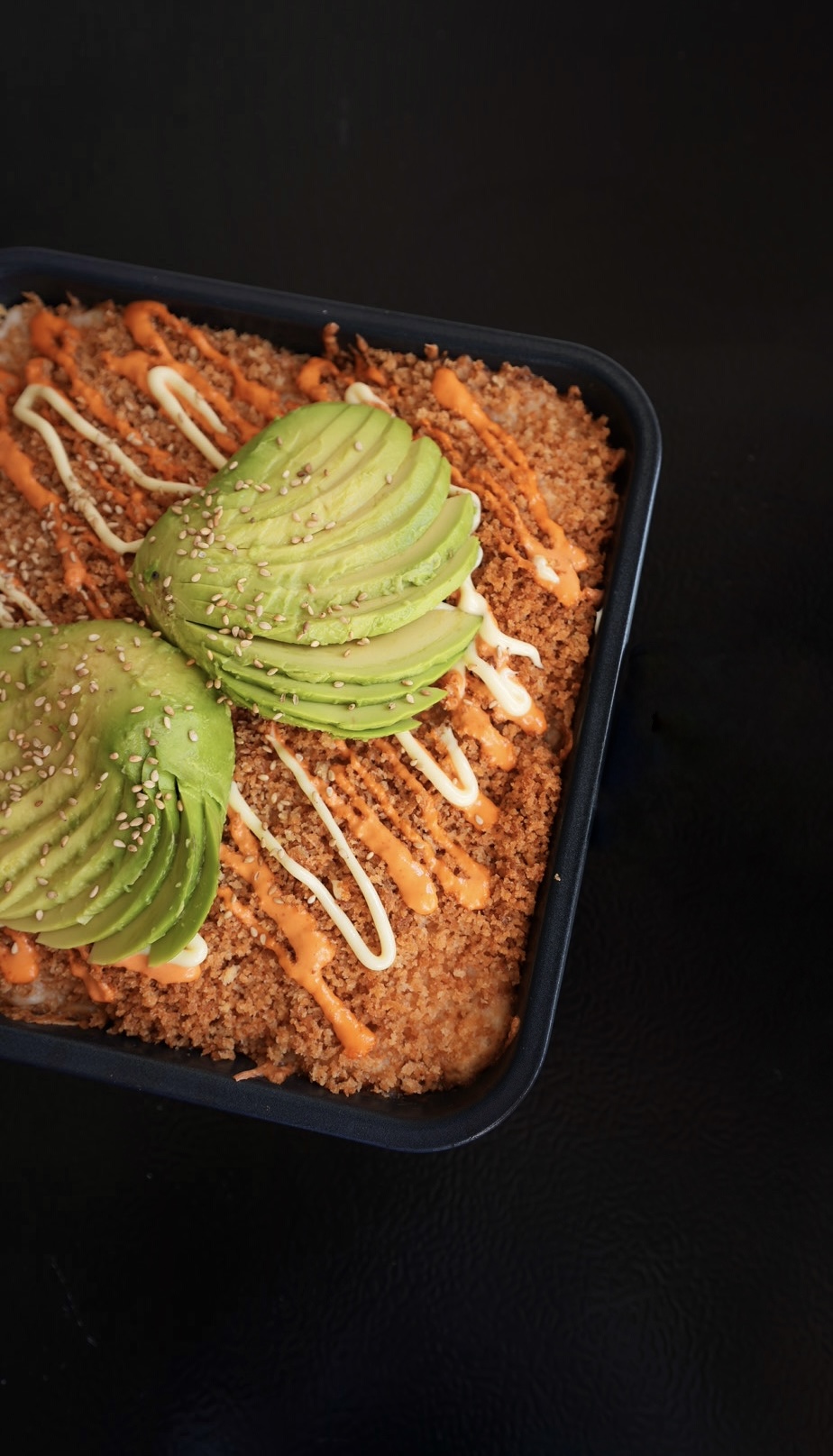
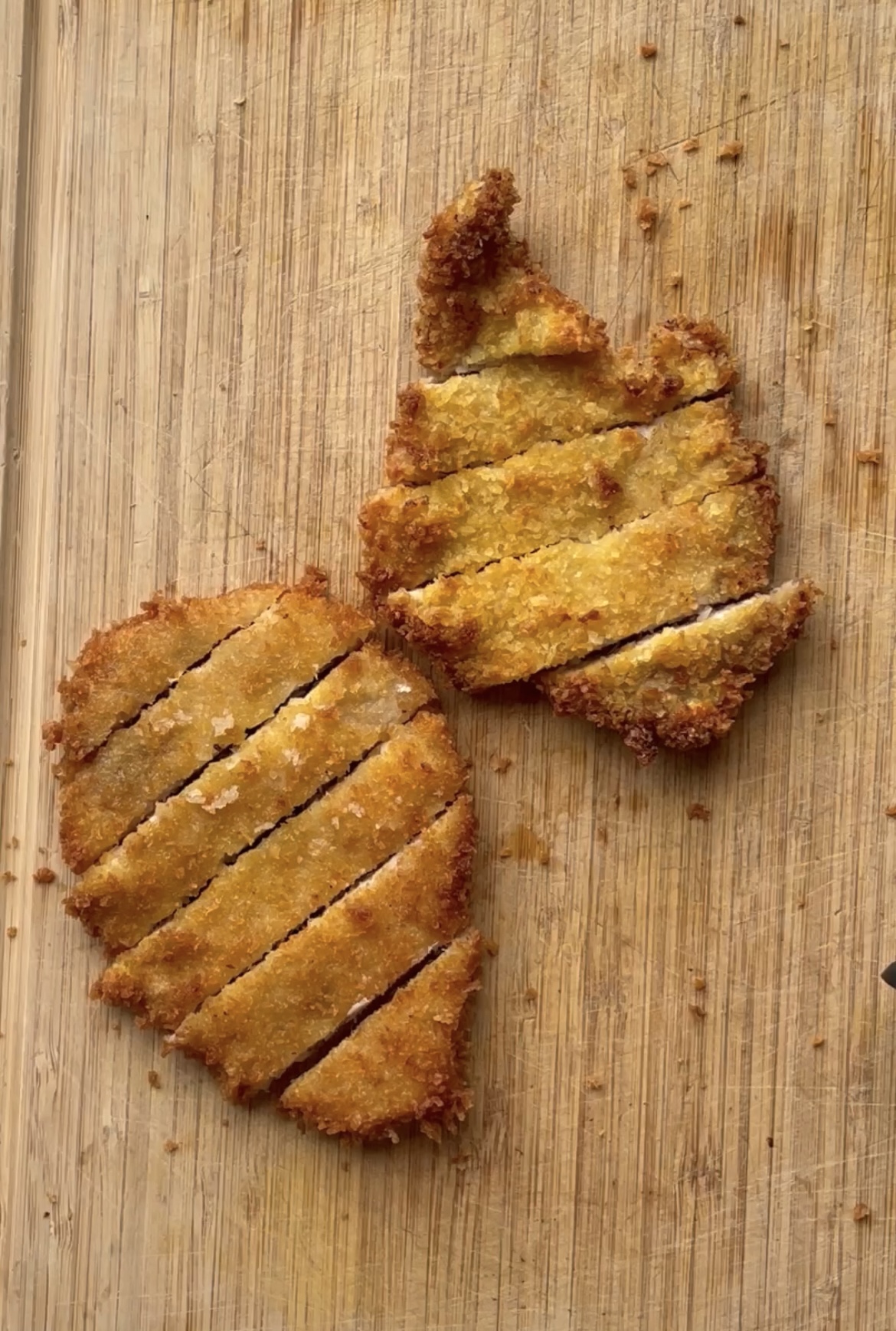







I feel so healthy when I eat kabocha. This has to be a super food!
Kabocha is delish! Never mind that this is fried, it’s healthy right?! 😉
The kabocha added a natural sweetness that paired well with the salty bacon.
I agree – they’re so good together! Thanks, Vince!
I love kabocha!!!! Thank you for this recipe!
Yum it is so good! So glad you enjoyed this, thanks Grayson! 🙂